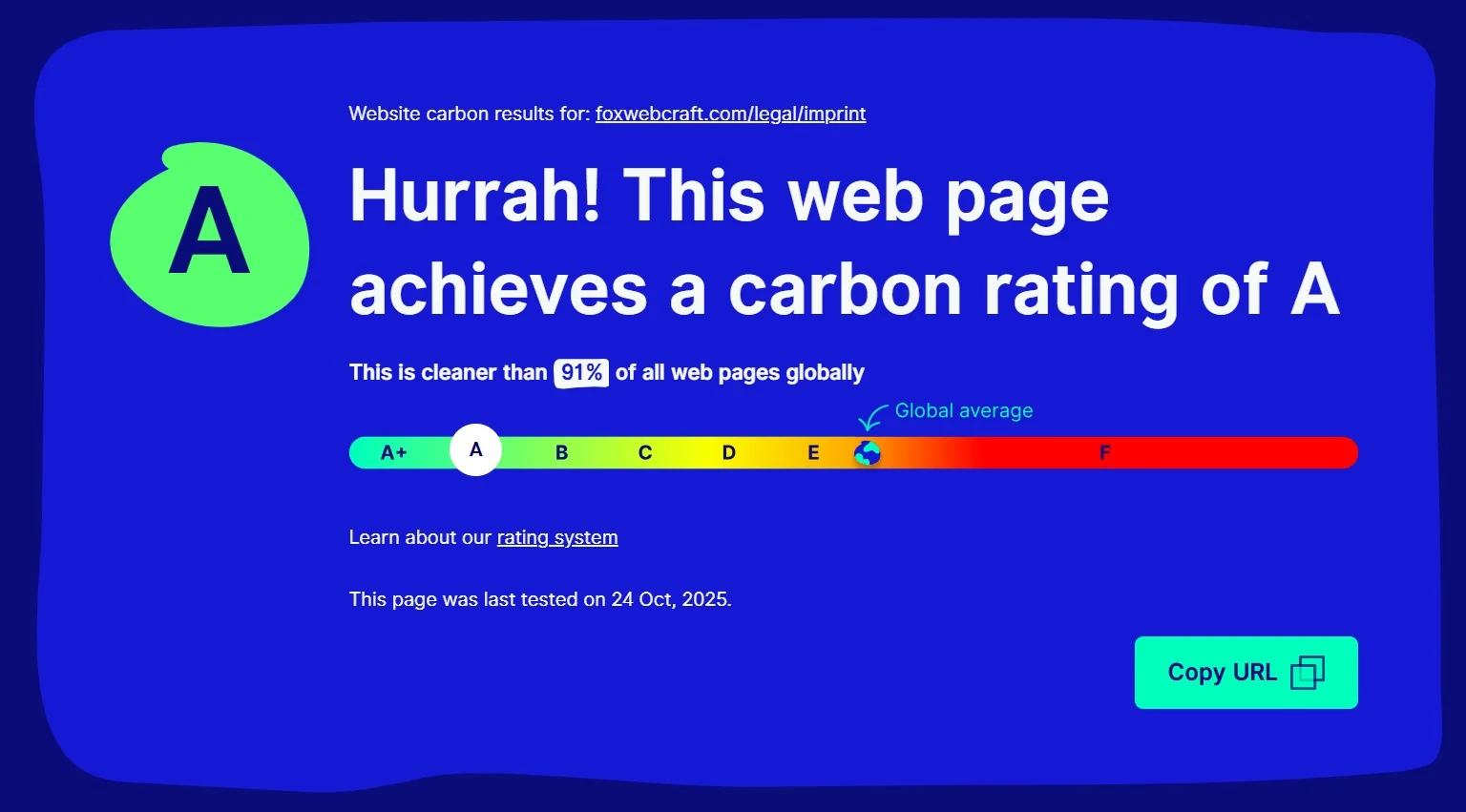CO²-Friendly Websites
Concrete tips and best practices for sustainable web development
25.10.2025



The internet consumes 1021 TWh of electricity annually - more than the entire United Kingdom. This enormous amount of energy leads to CO² emissions that correspond to or even exceed the global aviation industry. As web developers, we have the responsibility and opportunity to create more sustainable websites.
The Problem: Digital CO² Footprint
According to Website Carbon, an average website produces about 0.36 grams of CO² equivalent per page view. For a website with 10,000 monthly page views, this equals 43 kg CO²e per year. These numbers may seem small, but with millions of websites worldwide, the effect adds up considerably.
Concrete Measures for CO²-Friendly Websites
1. Optimized Images and Media
- Use WebP format: Reduces file sizes by 25-35% compared to JPEG
- Responsive images: Different resolutions for different screen sizes
- Lazy Loading: Only load images when they are needed
- Compression: Optimize images before uploading
2. Efficient Code Structure
- Minification: Compress CSS, JavaScript and HTML
- Tree Shaking: Only include used code
- Code Splitting: Split JavaScript into smaller chunks
- Avoid outdated frameworks: Choose modern, lean alternatives
3. Hosting and Infrastructure
- Green hosting providers: Servers with renewable energy
- Use CDN: Content Delivery Networks for better performance
- Implement caching: Significantly reduces server requests
- Serverless architectures: Only use resources when needed
4. Performance Optimization
- Consider Core Web Vitals: Loading times under 2.5 seconds
- Critical CSS: Inline important styles
- Preloading: Preload important resources
- Gzip compression: Enable server-side compression
5. Sustainable Design Decisions
- Lean typography: System fonts or optimized web fonts
- Reduced animations: Use CSS animations sparingly
- Dark Mode: Can save energy on OLED screens
- Minimalist design: Fewer resources = less CO²
Measurement and Monitoring
With the Website Carbon Calculator you can measure the CO² footprint of your website. The best websites achieve values under 0.1g CO² per page view. The image below shows the CO² footprint of my website.

The Future: Net Zero Web
The vision of a "Net Zero Internet" is achievable if we all do our part. Every optimization, every compression, and every performance improvement reduces the CO² footprint of the web.
Conclusion: Sustainable web development is not only good for the environment, but also for user experience and the performance of your website. With the right tools and techniques, we can create websites that are both functional and environmentally friendly.
Use the Website Carbon Calculator to measure your current CO² footprint and start optimizing your website today for a more sustainable future.